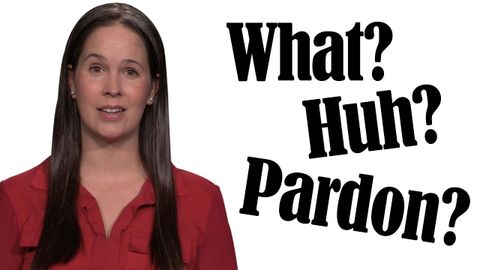
Subtitles & vocabulary
Ways to say "What?" - Be Polite in American English
00
劉繼光 posted on 2016/11/04Save
Video vocabulary
pronunciation
US /prəˌnʌnsiˈeʃən/
・
UK /prəˌnʌnsiˈeɪʃn/
- Noun (Countable/Uncountable)
- How a word is said; how a word sounds
- The manner in which someone utters a word.
B1
More native
US /ˈnetɪv/
・
UK /ˈneɪtɪv/
- Noun (Countable/Uncountable)
- Someone from or born in a specific country
- Original inhabitant, e.g. before others
- Adjective
- Caused by natural ability; innate
A2
More tongue
US /tʌŋ/
・
UK /tʌŋ/
- Noun
- Long, thin part of (e.g. shoe under the laces)
- Meat from the mouth of an animal, cooked as food
- Transitive Verb
- To using your mouth to produce musical notes
- To use your mouth to touch something
A2
More catch
US /kætʃ, kɛtʃ/
・
UK /kætʃ/
- Noun (Countable/Uncountable)
- Amount of something that has been caught
- Trick or something trying to deceive
- Transitive Verb
- To stop something flying and hold it
- To stop something and not let it go, e.g. animals
A1
More Use Energy
Unlock All Vocabulary
Unlock pronunciation, explanations, and filters
